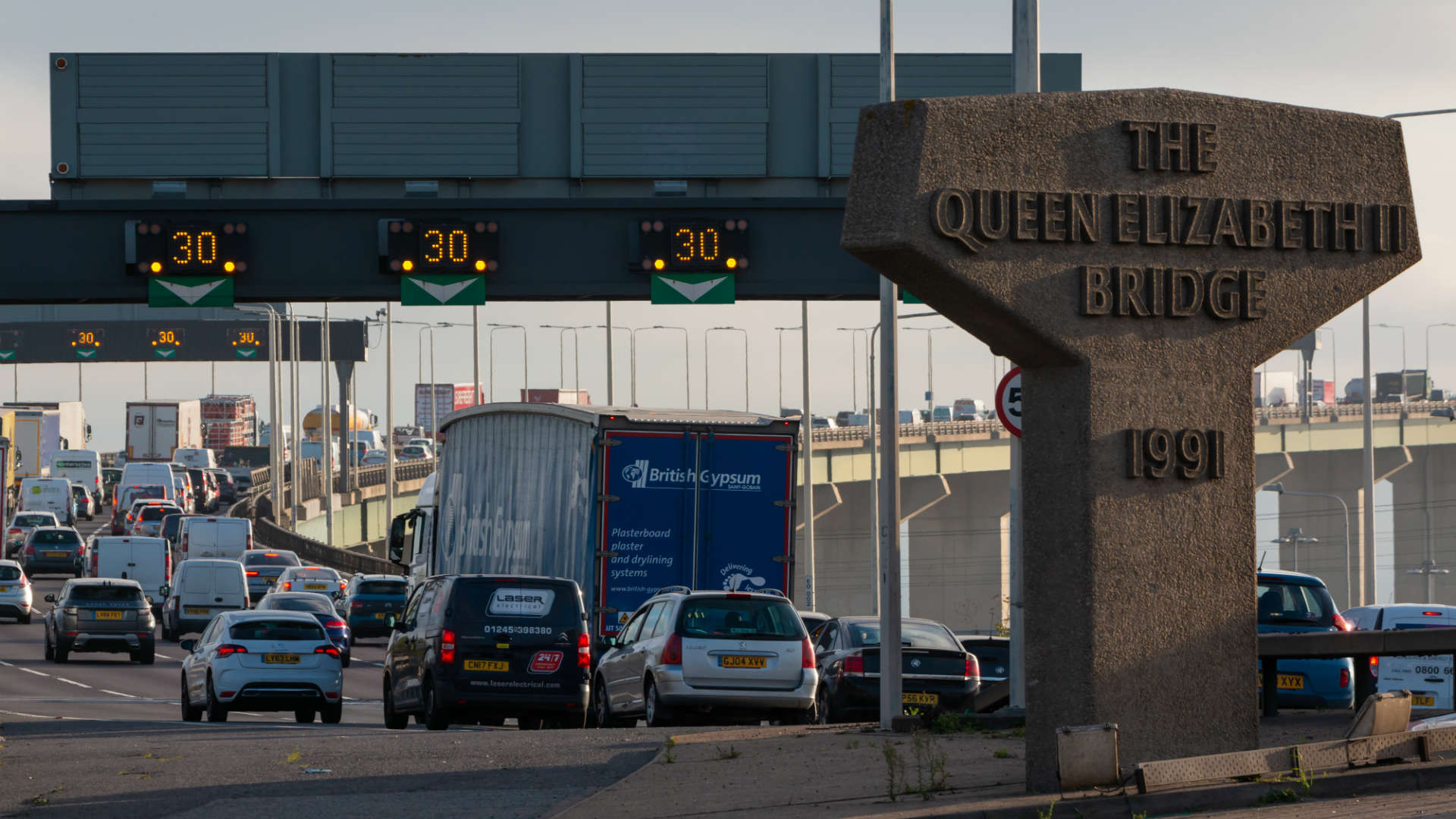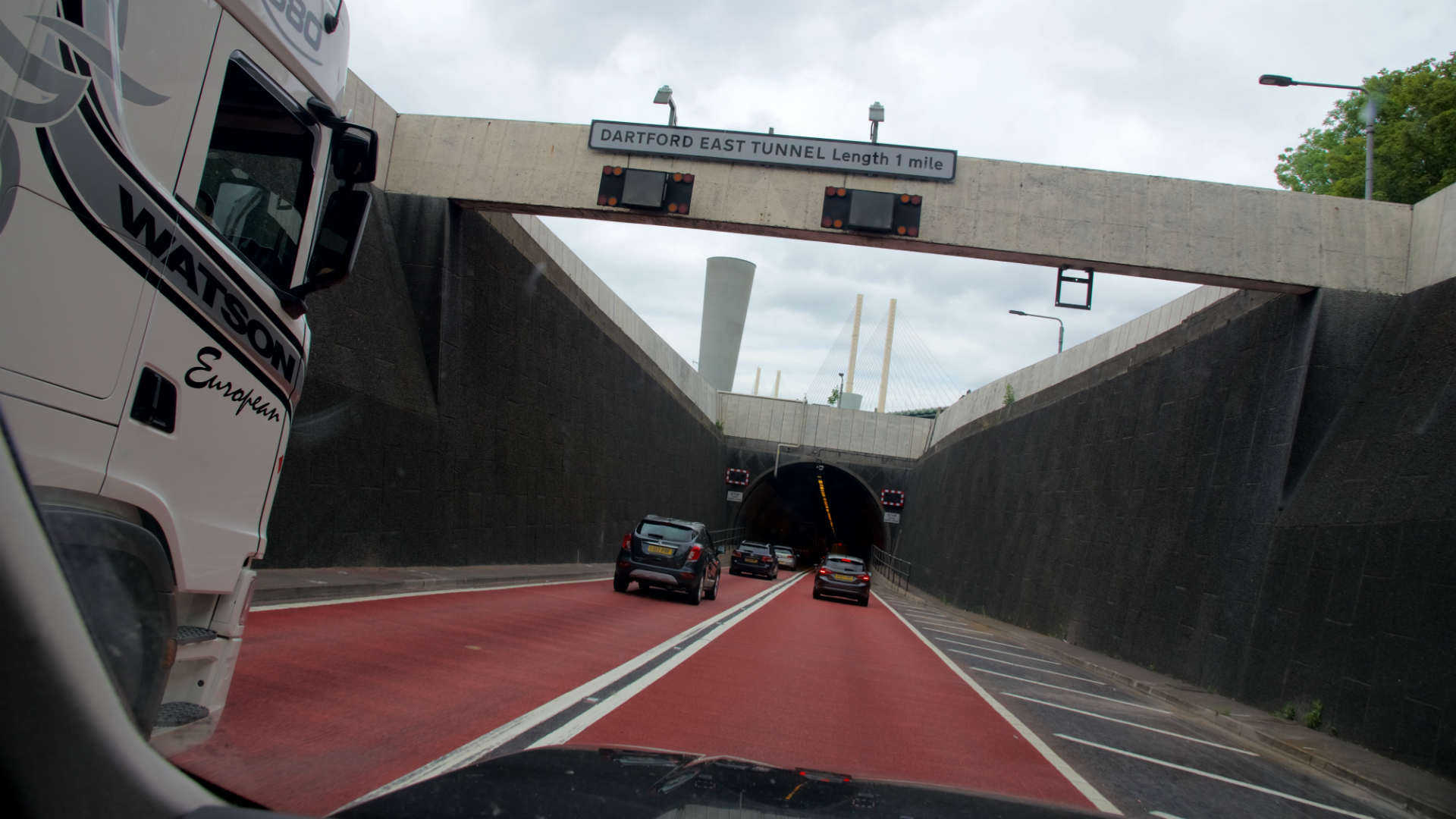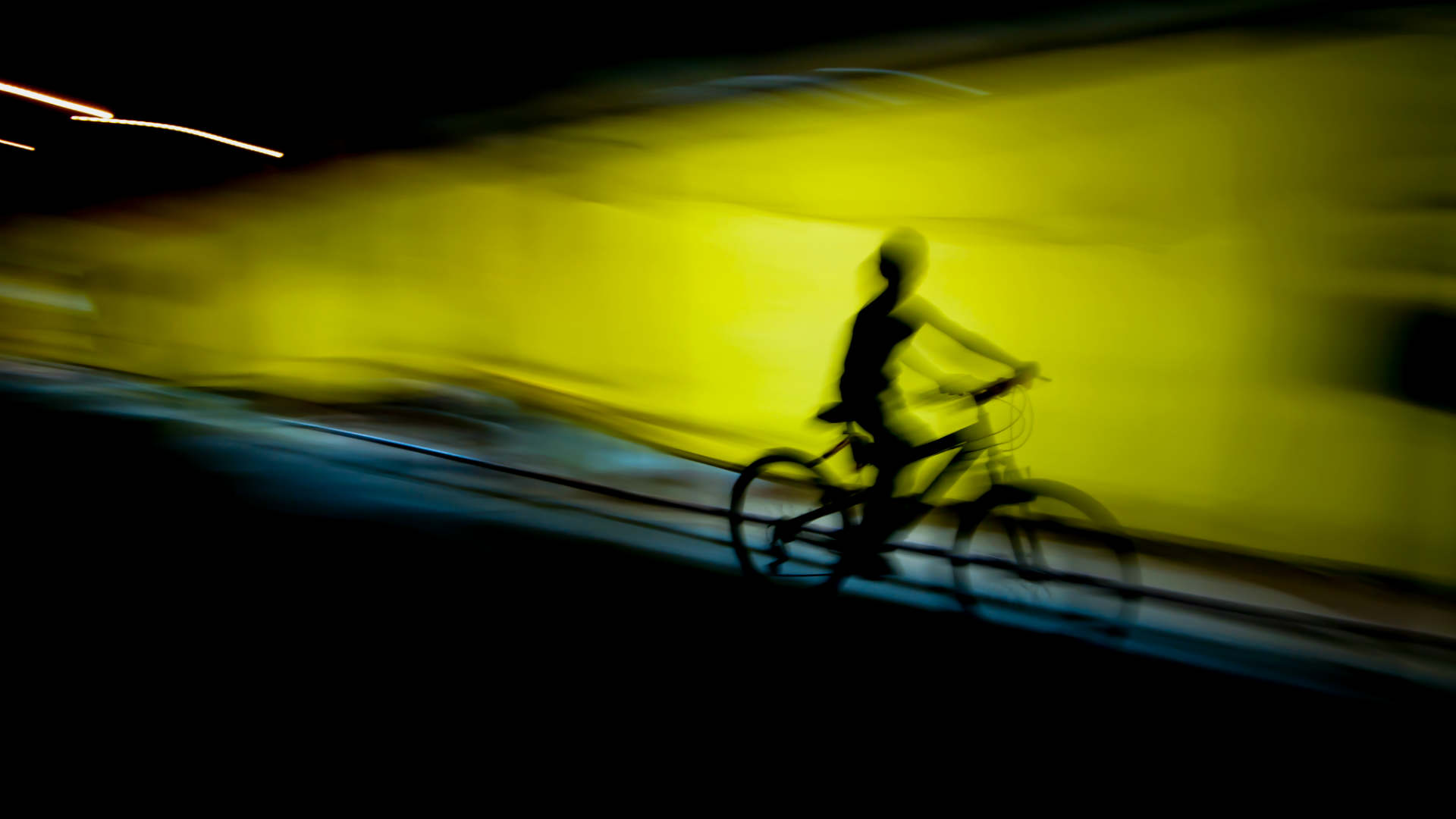
Motorists are charged £2.50 to use the Dartford Crossing (Dart Charge), but cyclists aren’t permitted to use the Dartford Tunnel or cross the Queen Elizabeth ll bridge by bicycle.
However, it is possible to use the Dartford Crossing with a bike. And the good news is that it’s free of charge.
A special pick-up service is available at Essex Point or Kent Point, with a vehicle taking you and your bicycle through the Dartford Crossing. If your bike fits on a standard car roof rack, there’s no need to pre-book.
How to use the Dartford Crossing service

- Cycle to Essex Point or Kent Point
- Follow the signs directing you to a yellow telephone
- Use the phone to request the service; there’s no number to dial – it’s a direct line
- Wait in the designated area for a vehicle to take you and your bicycle through the Dartford Crossing
If the bicycle doesn’t fit on a roof rack – if it’s a tandem, for example – or you’re travelling in a group of more than three cyclists, you’ll need to contact Connect Plus in advance.
This is done by calling 0203 386 8826 or emailing dartfordsecurity@connectplusm25.co.uk.
How to find the Dartford Crossing points

Essex Point is at 859 London Road, Grays, Essex, RM20 3AT. It’s accessible from the cycleway next to the entry slip-road for junction 31 of the M25 motorway.
Kent Point is at Crossings Offices Roundabout, South Orbital Road, Dartford, Kent, DA1 5PR.
When is the bicycle service available?

The service is available seven days a week and 365 days a year, but it’s not a 24-hour service. Instead, the bicycles can only use the Dartford Crossing at the following times:
- 3am to 9am
- 10.30am to 2pm
- 3pm to 9pm
- 10.30pm to 2am
It usually takes 15 minutes for the lift to arrive, but it might take a little longer at peak times or if there is traffic congestion.
A short history of the Dartford Crossing by bike
In the 1960s, five buses were pressed into service to carry cyclists under the river at a cost of around £2,550 per month.
The lower deck was converted to carry bicycles of various sizes, while the upstairs was used to ferry the cyclists. Unfortunately, it proved to be financially untenable, so the service was soon reduced to a single bus, before being cancelled altogether in 1965.
ALSO READ:
When car companies build bicycles